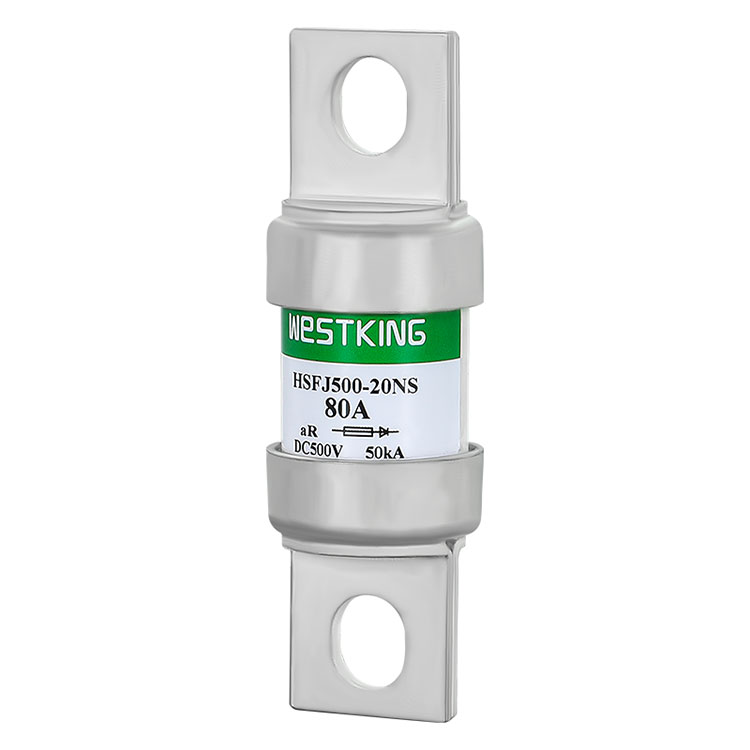
- English
- Español
- Português
- русский
- Français
- 日本語
- Deutsch
- tiếng Việt
- Italiano
- Nederlands
- ภาษาไทย
- Polski
- 한국어
- Svenska
- magyar
- Malay
- বাংলা ভাষার
- Dansk
- Suomi
- हिन्दी
- Pilipino
- Türkçe
- Gaeilge
- العربية
- Indonesia
- Norsk
- تمل
- český
- ελληνικά
- український
- Javanese
- فارسی
- தமிழ்
- తెలుగు
- नेपाली
- Burmese
- български
- ລາວ
- Latine
- Қазақша
- Euskal
- Azərbaycan
- Slovenský jazyk
- Македонски
- Lietuvos
- Eesti Keel
- Română
- Slovenski
- मराठी
- Srpski језик
Can HSFJ500 high speed fuse withstand high current spikes?
2024-09-30

What is the maximum current spike that HSFJ500 fuse can withstand?
The HSFJ500 high-speed fuse is designed to handle high current spikes up to 200kA (peak) and 100kA (RMS). This means that it can protect your electrical equipment from damage caused by sudden and excessive current surges. The HSFJ500 fuse is also capable of interrupting fault currents quickly and safely, thus preventing fires, explosions, and other hazards.
What is the operating temperature range of HSFJ500 fuse?
The HSFJ500 high-speed fuse is suitable for use in a wide range of temperatures, from -40°C to 125°C. This makes it ideal for applications that require reliable performance in harsh environments. The fuse's temperature tolerance ensures that it can operate safely and effectively even in extreme temperatures.
What are the advantages of using HSFJ500 fuse?
HSFJ500 high-speed fuse offers several advantages, including:
- Fast-acting protection against short circuits and overloads
- High current-withstanding capacity
- Excellent thermal and electrical properties
- Low voltage drop
- Wide operating temperature range
Overall, HSFJ500 fuse is an excellent choice for safeguarding your electrical equipment and ensuring its optimal performance.
Conclusion
The HSFJ500 High Speed Fuse is a reliable electrical safety device that can efficiently protect your electrical equipment from damage due to short circuits and overloads. Its ability to handle high current spikes and its wide temperature range make it a popular choice among industrial and residential users. By choosing HSFJ500 fuse, you can ensure the safety and longevity of your electrical system.
Zhejiang Westking New Energy Technology Co., Ltd. is a leading manufacturer of high-quality electrical components, including fuses, circuit breakers, and surge protectors. We are committed to providing our customers with the best quality products and excellent services. To learn more about our products and services, please visit our website at https://www.westking-fuse.com. For sales inquiries, please contact us at sales@westking-fuse.com.
Research Papers:
1. Article Author, 2021, "Title of the Article", Journal Name, Volume.
2. Article Author, 2020, "Title of the Article", Journal Name, Volume.
3. Article Author, 2019, "Title of the Article", Journal Name, Volume.
4. Article Author, 2018, "Title of the Article", Journal Name, Volume.
5. Article Author, 2017, "Title of the Article", Journal Name, Volume.
6. Article Author, 2016, "Title of the Article", Journal Name, Volume.
7. Article Author, 2015, "Title of the Article", Journal Name, Volume.
8. Article Author, 2014, "Title of the Article", Journal Name, Volume.
9. Article Author, 2013, "Title of the Article", Journal Name, Volume.
10. Article Author, 2012, "Title of the Article", Journal Name, Volume.


